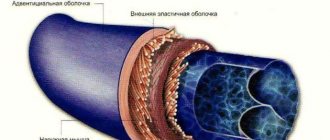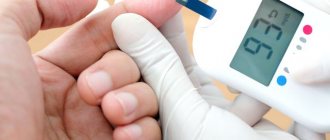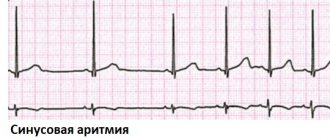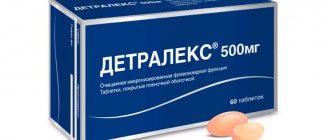The protein component does not have its own color and dissolves in blood serum. Fibrinogen is the basis of blood clots; it is formed in the liver; its renewal is recorded every 3 days. The amount of the element is regularly checked by laboratory diagnostics. A critical minimum or maximum amount of a component can cause serious disruptions in the functioning of the body, provoke long-term bleeding or the formation of blood clots on the inner walls of blood vessels.
General information and functions of fibrinogen
Protein is one of the primary factors of the blood coagulation system. Indicators of the presence of fibrinogen must be checked in case of hepatic and cardiovascular pathologies, predisposition to bleeding, thrombosis, before surgery and labor.
The list of protein functions is presented:
- participation in the formation of fibrin clots;
- impact on the rate of healing of wound surfaces;
- regulation of fibrinolysis (dissolution of formed clots);
- participation in the production of new vessels;
- influence on arterial walls and blood during inflammation.
Testing for fibrinogen levels is prescribed to patients:
- in the preoperative and postoperative period;
- with pathologies of the heart, blood vessels, liver;
- during pregnancy, suspected hemophilia, inflammation of unknown origin.
The minimum protein content must be above 2 mg/l; if it is lower, then there is a risk of death during surgery. A level greater than 4 mg/l indicates thrombosis (blockage of the lumen of blood vessels with plaques) and related complications.
Fibrinogen
Fibrinogen is a protein produced in the liver and converted into insoluble fibrin, the basis of the clot during blood clotting.
Synonyms Russian
Factor I (first) of the plasma coagulation system.
English synonyms
Fibrinogen Activity and Fibrinogen Antigen Assays, Factor I, Fibrinogen Activity, Functional Fibrinogen, Fibrinogen Antigen.
Research method
Side scatter detection method, end point percentage determination.
Units
G/L (grams per liter).
What biomaterial can be used for research?
Venous blood.
How to properly prepare for research?
- Do not eat for 12 hours before the test.
- Avoid physical and emotional stress 30 minutes before the test.
- Do not smoke for 30 minutes before the test.
General information about the study
According to the international nomenclature, fibrinogen is factor I (first) of the blood plasma coagulation system. It is produced by the liver and released into the blood along with several other substances that affect blood clotting.
If a blood vessel or tissue is damaged, the body begins hemostasis, or blood clotting, resulting in the appearance of a blood clot (thrombus), which helps slow and then stop bleeding. This process produces strands of protein called fibrin. They intertwine, forming a fibrin mesh, which, together with platelets, contributes to the formation of a blood clot, which remains at the site of damage to the vessel until it is completely healed.
Given a sufficient number of platelets, each of the coagulation factors must act correctly to ensure the formation of a stable blood clot. Insufficient amounts or improper interaction of these factors can lead to bleeding or thrombosis.
Fibrinogen analysis is necessary in preoperative examination, prenatal diagnosis, and for inflammatory and cardiovascular diseases.
Fibrinogen is also one of the blood factors known as rheumatic tests. Levels of fibrinogen and other rheumatic factors rise sharply in the blood when there is inflammation or tissue damage.
The level of fibrinogen in the blood increases during acute inflammatory diseases, as well as during tissue death. In other cases, it can mean acute infectious and inflammatory diseases, strokes, myocardial infarction, hypothyroidism, amyloidosis, pneumonia, and malignant tumors. The reason for the increase in fibrinogen levels is previous operations, burns, or the patient taking estrogens or oral contraceptives.
It is worth noting that treatment for elevated fibrinogen levels may not be necessary in two cases: during pregnancy and the inflammatory process. Then the level of fibrinogen in the blood returns to normal on its own when the body’s condition stabilizes.
What is the research used for?
To assess the body's ability to form blood clots and identify associated disorders, such as hereditary afibrinohemia or hypofibrinohemia, chronic liver disease, exhaustion of the body, inflammatory process.
When is the study scheduled?
- In case of bleeding or thrombotic episode.
- When studying activated partial thromboplastin time (aPTT) or thrombin time (TT).
- In case of progressive liver disease.
What do the results mean?
Reference values
| Reference values |
| 1.8 - 3.5 g/l |
| Week of pregnancy | Reference values |
| 1-13th | 2.12 - 4.33 g/l |
| 13-21st | 2.9 - 5.3 g/l |
| 21st-29th | 3 - 5.7 g/l |
| 29-35th | 3.2 - 5.7 g/l |
| 35-42nd | 3.5 - 6.5 g/l |
Fibrinogen is an acute phase protein of inflammation. This means that the concentration of fibrinogen can increase sharply in any condition caused by inflammatory processes or tissue damage. Elevated fibrinogen alone does not provide the doctor with information about the cause of this change. Usually it is temporary and the level of fibrinogen in the patient's blood returns to normal after the cessation of exposure to the following factors.
Fibrinogen levels increase in the following cases:
- if there are malignant tumors in the body,
- with myocardial infarction,
- for burns,
- after undergoing surgery,
- for hypothyroidism,
- for acute inflammatory and infectious diseases (influenza, tuberculosis),
- in the first days after a stroke,
- with amyloidosis,
- with pneumonia,
- as a result of taking estrogens and oral contraceptives.
Factors that lower fibrinogen levels:
- DIC syndrome (in dynamics),
- liver diseases (hepatitis, cirrhosis),
- toxicosis,
- lack of vitamin C and B12,
- amniotic fluid embolism (in newborns),
- chronic myeloid leukemia,
- polycythemia,
- snake venom poisoning.
What can influence the result?
- A low level of fibrinogen occurs as a result of transfusion of a large amount of blood to the patient.
- Some drugs lower fibrinogen levels: anabolic steroids, phenobarbital, streptokinase, urokinase, and valproic acid.
Important Notes
- Dysfibrinogenemia (fibrinogen deficiency) is a rare clotting disorder caused by mutations in the gene that controls fibrinogen production in the liver. It can lead to venous blood clots or, rarely, bleeding. Patients with dysfibrinohemia may have poor blood clotting.
- A fibrinogen level that exceeds the norm may indicate an increased risk of cardiovascular diseases, then it is necessary to take measures to normalize it, this may include the use of medications and medical procedures to reduce the level of cholesterol in the blood.
- Some studies suggest that taking medications containing omega-3 and omega-6 fatty acids reduces fibrinogen levels in the blood.
Also recommended
- Activated partial thromboplastin time (aPTT)
- Coagulogram No. 1 (prothrombin (according to Quick), INR
- Antithrombin III
- Detection of the G(-455)A mutation in the FGB gene
Who orders the study?
Therapist, cardiologist, surgeon, gynecologist, hematologist.
Normal protein levels
In healthy patients, fibrinogen levels depend on age:
- adult women and men – from 2 to 4 g/l;
- newborns – from 1.25 to 3 g/l;
- pregnant women - from 6 to 7 g/l.
To determine the level, venous blood is taken. Tests are taken 12 hours after the last meal; 2 hours before the procedure, you must avoid any physical activity. The patient should not smoke 40 minutes before the appointment.
During pregnancy, the amount of fibrinogen gradually changes:
- in the first 3 months – 2.98 g/l, reduced results are associated with toxicosis;
- in the second trimester – about 3.1 g/l;
- last quarter – 4.95-6 g/l.
If the protein exceeds the specified results, then the following may occur:
- infertility;
- premature placental abruption;
- thrombosis in vessels located in the umbilical cord;
- gestosis, early miscarriage;
- frozen pregnancy, premature labor;
- thrombosis or thrombophlebitis.
To timely determine developing abnormalities, pregnant women undergo a coagulogram several times throughout the entire period. Primary samples show information about the volume of fibrinogen contained, and final samples show information about the risks of developing thrombosis and the body’s readiness for labor.
Fibrinogen - what is it?
Fibrinogen is a protein of the blood coagulation system, which is renewed by the liver regularly over 3-5 days. The moment the blood coagulation system in the plasma is activated, thrombin (another important element of the blood coagulation system) activates the conversion of fibrinogen to fibrin, which is essential for the formation of a blood clot. Fibrinogen is a protein monomer, and fibrin is a polymer, that is, a protein chain that is the basis for the formation of a blood clot.
The normal level of fibrinogen in human blood is 2-4 mg/l. If the value decreases, then the person is prohibited from surgical interventions - there is a high risk of bleeding. If fibrinogen is elevated , then there is a high probability of vascular thrombosis in patients, especially the formation of blood clots in the deep veins of the lower extremities. Deep vein thrombosis carries a high risk of a fatal complication called pulmonary embolism.
The protein level must be checked before surgical interventions, before planned childbirth, and in case of pathologies of the hepatobiliary system. It is especially important to determine the concentration of fibrinogen in patients with diseases of the heart and blood vessels; suffering from increased thrombosis, or, conversely, bleeding.
What does fibrinogen mean for the human body ? Protein performs a number of important functions:
- directly participates in thrombus formation, being a substrate for the formation of fibrin, which forms the basis of a blood clot;
- directly affects the rate of stopping bleeding and healing of open wounds in humans;
- regulates the processes of dissolution of fibrin clots (fibrinolysis) after the damaged areas have been restored;
- actively participates in the process of building a new vascular network (angiogenesis), as well as in the interaction between individual cells;
- affects the composition of the blood, as well as the structure of the wall of arterial vessels during an active inflammatory process;
- participates in regenerative reactions when the patient’s skin or mucous membranes are damaged;
- participates in increasing the strength of the vascular wall, which limits the inflammatory focus and prevents the spread of pathological microorganisms through the bloodstream.
If, when determining the norm of fibrinogen in the human body, it was discovered that the protein is elevated, then, most likely, the body is in an active stage of fighting the inflammatory process. Often this also increases the erythrocyte sedimentation rate, as well as a special diagnostic marker of inflammation and tissue necrosis. If fibrinogen is elevated in a pregnant woman, then this is considered a variant of the norm: during gestation, the functioning of many systems of the woman’s body, in particular the blood coagulation system, changes slightly.
In elderly patients, an increase in fibrinogen is dangerous: the doctor should be wary of the increased risk of developing heart and vascular disease.
Increased protein
A large amount of fibrinogen warns of a hidden inflammatory process and the danger of blood clots. Pathological deviation indicates the presence of:
- rheumatism, nephrotic syndrome;
- heart attack, infections;
- diabetes mellitus, pneumonia;
- hepatitis, DIC syndrome, tuberculosis;
- cancer, trauma, burns.
The increase in fibrinogen volume in pregnant women is explained by the physiological norm. Sometimes an unusual increase in protein is associated with age-related changes and the use of oral contraceptives. If a deviation is detected, the patient must be sent for additional diagnostics to identify the root causes of the abnormal condition.
Low protein
As the amount of fibrinogen decreases, the rate of blood clotting decreases and the risk of spontaneous bleeding increases. The root cause of the anomaly lies in congenital characteristics or individual diseases:
- due to DIC syndrome;
- congenital afibrinogenemia, hypofibrinogenemia;
- deficiency of ascorbic acid and cobalamin;
- treatment with anticoagulants;
- polycythemia, taking androgens or anabolic steroids, fish oil;
- toxicosis of pregnant women - early and late type;
- poisonous snake bites;
- liver cirrhosis;
- amniotic fluid embolism - a problem that occurs in infants.
A decrease in protein units occurs in vegetarians, during therapy with antioxidants, and moderate consumption of alcoholic beverages (with clearly adjusted dosages). When the level drops from 0.5 to 1 g/l, there is a risk of bleeding from the arteries and veins of the internal organs. The condition requires hospitalization and observation by medical personnel.
Complexes with this research
Women's check-up No. 1 38 studies for an annual preventive examination RUB 19,290 Composition
Examination during pregnancy. 3 trimester 9 620 RUR Composition
Pregnancy planning. Clinical indicators 6,630 R Composition
IN OTHER COMPLEXES
- Extended coagulogram RUB 4,150
- Entry into IVF RUB 23,020
- Preventive check-up RUB 11,960
- Men's check-up No. 1 RUB 18,570
- For those at risk of COVID-19 RUB 4,510
Solution
Deviation from the norm of fibrinogen does not allow us to draw conclusions about a hidden disease. The indicators make it possible to identify increased or decreased results, but not to detect the original source of the disease. To make a correct diagnosis, the patient must undergo additional laboratory diagnostic examination. Correct identification of existing pathologies will solve the problem.
Doctors warn that ignoring the altered level of fibrinogen and refusing to undergo therapeutic procedures provokes external and internal bleeding (with reduced results) or accelerated formation of blood clots (with an increased amount).
The attending physician makes the final diagnosis and selects a treatment regimen. By seeking professional help in a timely manner, the chances of complications and consequences are significantly reduced.









